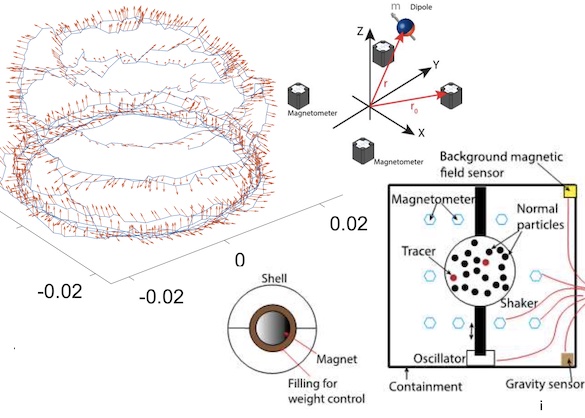Experimental Measurement of Granular Flow Free Cooling in Microgravity
PI: Brian Kaplinger, Huixuan Wu (Co-I), University of Kansas Center for Research
PI: Brian Kaplinger, Huixuan Wu (Co-I), University of Kansas Center for Research

- TA11 Modeling, Simulation, Information Technology and Processing
The proposed research will use a novel experimental technology known as magnetic particle tracking (MPT). Since a dense granular flow is usually opaque, advanced optical diagnostic techniques are useless. The magnetic tracking method, in contrast, relies on the magnetic field of a few labeled tracers, which can penetrate commonly used non-ferromagnetic materials. The magnetic tracking method is able to provide the Lagrangian trajectory and orientation of a magnetic particle. Hence, its velocity and kinetic energy can be calculated. The research constructs a payload with automated MPT measurements of a large ensemble of particles distributed in 3D suitable for flight on a reduced gravity aircraft. This aircraft will expose the payload to short periods of microgravity (~20 s) by flying a parabolic path.
The flight tests will collec at least 100 such observations, between which the experiment is reset. The MPT technique will allow for 10 trajectories of particles in each experiment to be reconstructed, allowing computation of the free cooling rate for comparison to theory. Observation and measurement of such a visually obscured particle distribution in microgravity has never been done before.
NASA
Technology Details
-
Selection DateEPSCoR22 (Aug 2022)
-
Program StatusActive
- 0 Parabolic
Development Team
-
PIBrian Kaplinger
-
PI Organization
-
Co-IHuixuan Wu
-
Co-I Organization
-
SponsorNASA

